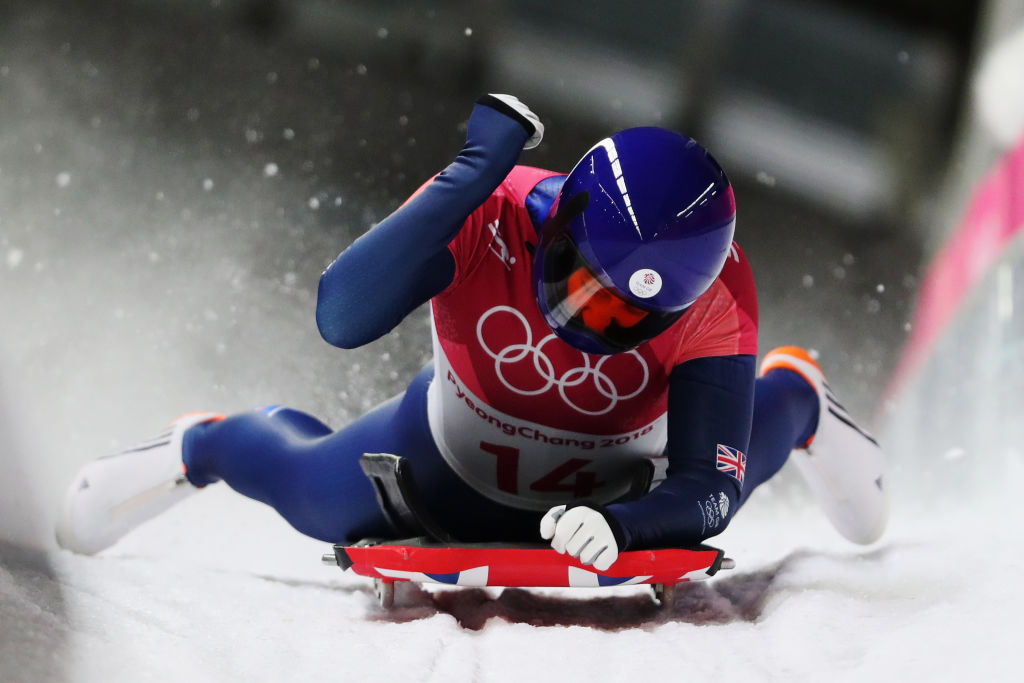Could British Skeleton be on the slide at Beijing 2022?

Hurtling head-first down a hollow hemisphere of ice on what resembles a school dinner tray at 90mph, unable to repeat the process more than a few times a day and with a genuine risk of life-changing injuries.
No, this isn’t the latest example of Quentin Tarantino’s stylised violence on the big screen; it’s the skeleton. And for Team GB, especially its female competitors, the sport has become a speciality at the Winter Olympics.
The last three Olympiads – in Vancouver, Sochi and Pyeongchang – have returned three gold medals for British women, while between them and the men Team GB has medaled at every one of the seven Winter Games in which the event has featured.
Yet Britain has no home track, no home programme whereby athletes can practice on our shores. Instead, British Skeleton has historically found an edge in technology.
Skeleton underdogs?
“We’ve learned to innovate because we are often making up for the fact we don’t have a home track,” Laura Deas, who will attempt to improve on her bronze from 2018 this week in China. “We’re underdogs in these situations, so we’ve got to find ways around it.”
Marginal gains is a phrase once beloved of sporting big brains and now tainted by overuse and association with some successes, but the principle still has merit.
For British Skeleton, it has meant innovations such as foiled helmets in Canada and drag-resistant suits in South Korea. The suits caused tensions with rival teams that were only soothed when the sport’s governing body deemed them legal.
So it was no surprise that when TeamGB unveiled their race suits for the current Winter Olympics that other nations were taking notes.
By the rules
The nation that has produced the last three women’s Olympic champions in Amy Williams and Lizzy Yarnold – twice – has made sure they are within the regulations, too.
“We are 100 per cent playing by the rules all the time,” said Natalie Dunman, British Skeleton’s performance director.
“We’ve already been checked with the jury, so we are absolutely certain on the kit that it’s on the money and there will be no challenge. We read the rule book very carefully.
“It’s mainly the sled, but we’re constantly trying to push the boundaries of what we’re doing, both in terms of equipment but also coaching and feedback.”
No bones about it
That is all good in theory, but will the innovation bring more gold at Beijing 2022? The training runs so far this week suggest otherwise, with the times set by British athletes being off the pace.
There could be something spectacular up the drag-resistant Team GB sleeves. But ahead of tomorrow’s men’s heats and Friday’s women’s heats it’s the Germans and Chinese who have looked the strongest.
Skeleton is often defined by minuscule margins, not just tenths of seconds but hundredths. Yarnold’s monumental title defence in 2018 saw her win the gold by less than half a second, which – when you have four runs combined to provide a time – is next to nothing. You could throw a tenth of a second over Deas’s third place, fourth and fifth.
So much can change in a matter of milliseconds when you’re hitting stupendous speeds and risking injury in pursuit of sporting greatness. And those marginal gains have helped to make the difference in Winter Olympics gone by.
But make no bones about it, skeleton is now Britain’s national winter sport. Nine medals in seven games, three of them gold, and TeamGB will be looking to make it four in Yanqing. No pressure.